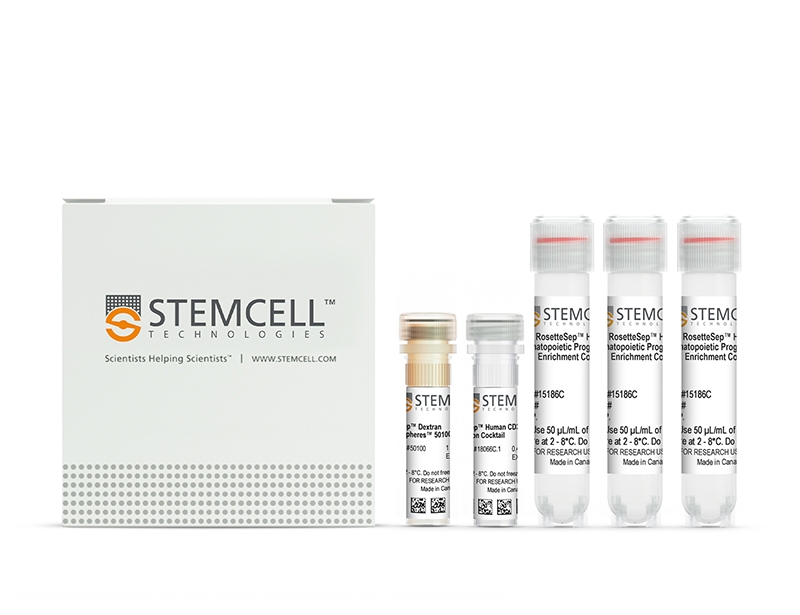概要
First, hematopoietic progenitor cells are pre-enriched using the RosetteSep™ Human Hematopoietic Progenitor Cell Enrichment Cocktail (15186C) with antibodies recognizing CD2, CD3, CD14, CD16, CD19, CD24, CD56, CD66b and CD61 surface markers. CD34+ cells are then selected using the EasySep™ Human CD34 Positive Selection Cocktail (18066C), which contains an antibody recognizing CD34. RosetteSep™ binds unwanted cells to red blood cells (RBCs), forming immunorosettes, which sediment during density gradient centrifugation. The pre-enriched fraction containing CD34+ cells is harvested from the interface between the plasma and density gradient medium. The pre-enriched CD34+ cells are then labeled with antibodies and magnetic particles, and separated without columns using an EasySep™ magnet. Unwanted cells are simply poured off, while desired cells remain in the tube. Isolated CD34+ cells are immediately available for downstream applications.
技术资料
| Document Type | 产品名称 | Catalog # | Lot # | 语言 |
|---|---|---|---|---|
| Product Information Sheet | Complete Kit for Human Whole Blood CD34+ Cells | 15086 | All | English |
| Product Information Sheet | RoboSep™ Complete Kit for Human Whole Blood CD34+ Cells | 15086RF | All | English |
| Safety Data Sheet 1 | Complete Kit for Human Whole Blood CD34+ Cells | 15086 | All | English |
| Safety Data Sheet 2 | Complete Kit for Human Whole Blood CD34+ Cells | 15086 | All | English |
| Safety Data Sheet 3 | Complete Kit for Human Whole Blood CD34+ Cells | 15086 | All | English |
| Safety Data Sheet 1 | RoboSep™ Complete Kit for Human Whole Blood CD34+ Cells | 15086RF | All | English |
| Safety Data Sheet 2 | RoboSep™ Complete Kit for Human Whole Blood CD34+ Cells | 15086RF | All | English |
| Safety Data Sheet 3 | RoboSep™ Complete Kit for Human Whole Blood CD34+ Cells | 15086RF | All | English |
数据及文献
Data

Figure 1.Typical CD34 Selection Profile on Human Whole Blood
Starting with whole peripheral blood, the CD34+ cell content of the isolated fraction is typically 95.1 ± 4.5% (gated on viable CD45+ cells; mean ± SD for the silver “The Big Easy” EasySep™ Magnet). In the above example, the purities of the start and final isolated fractions are 0.06% and 96.2%, respectively.

 网站首页
网站首页




